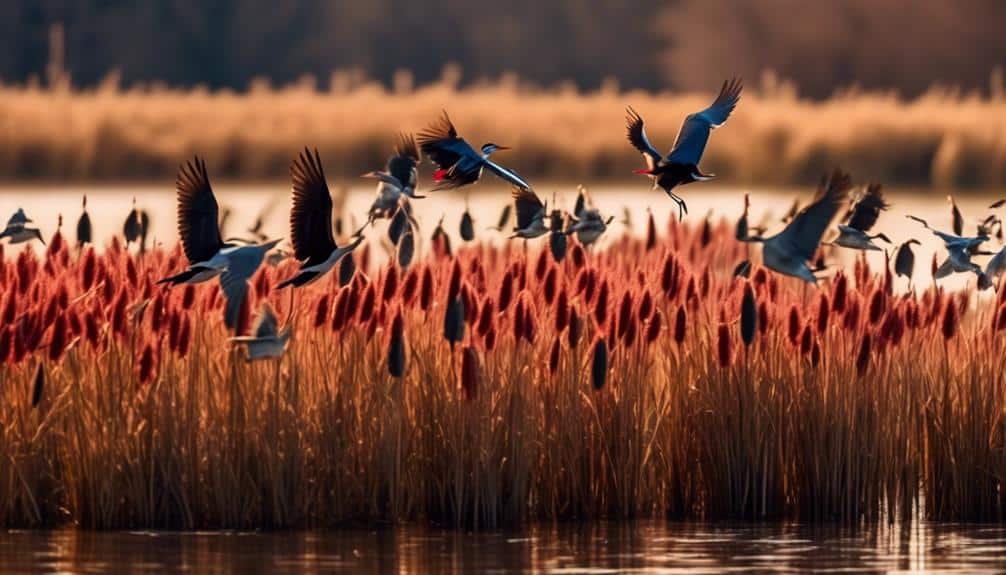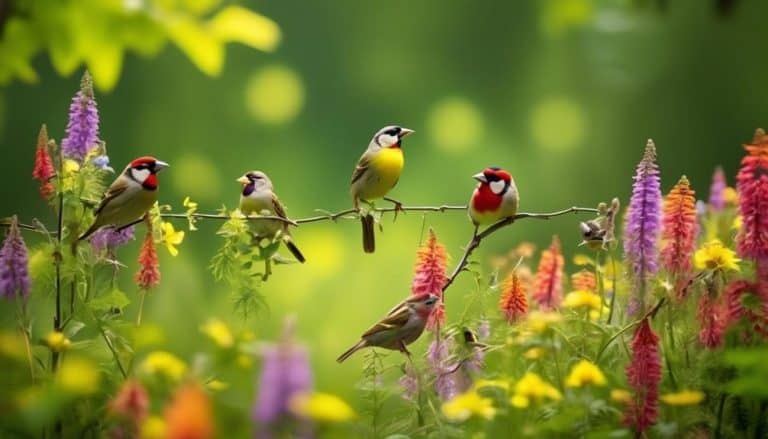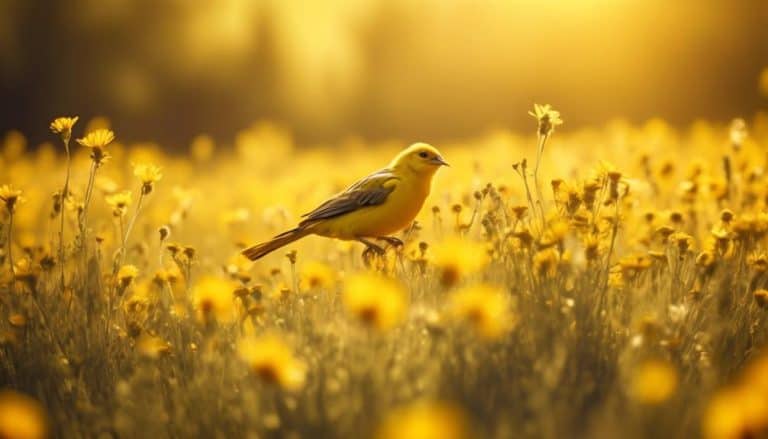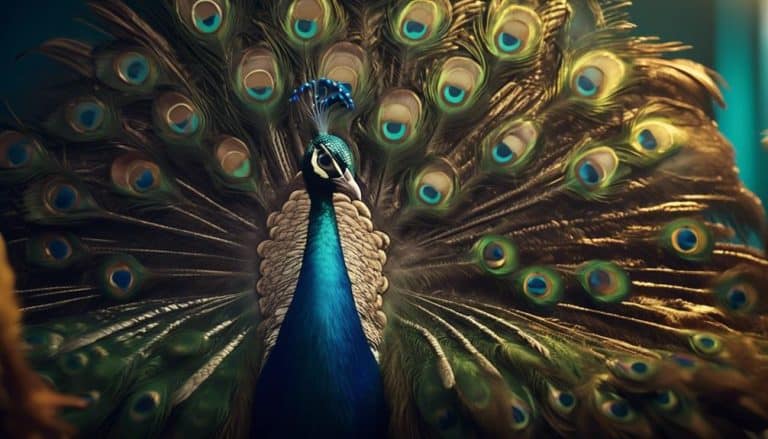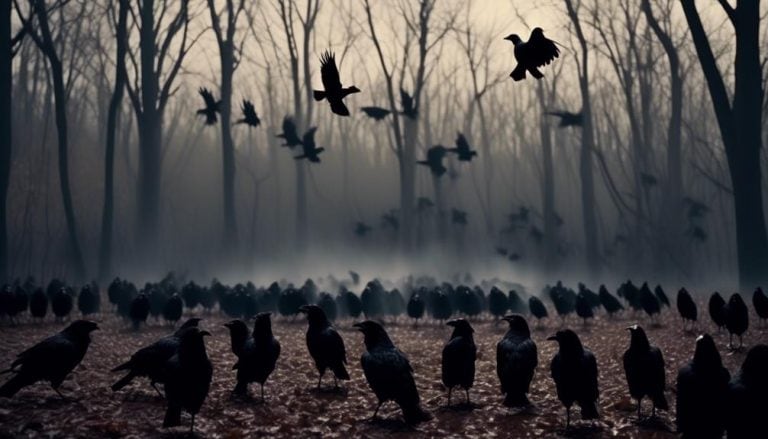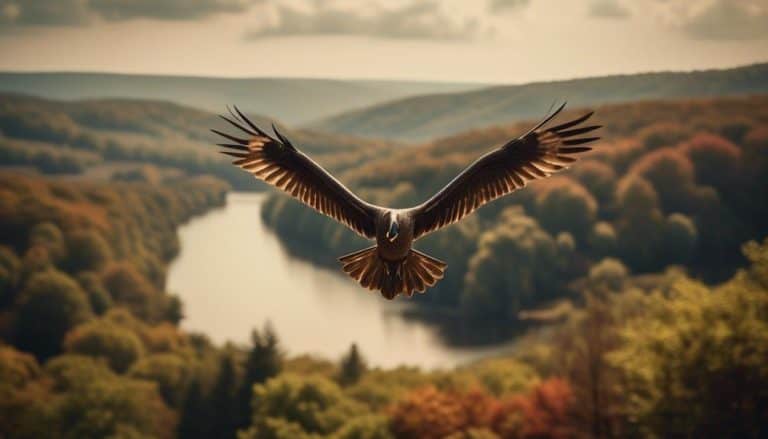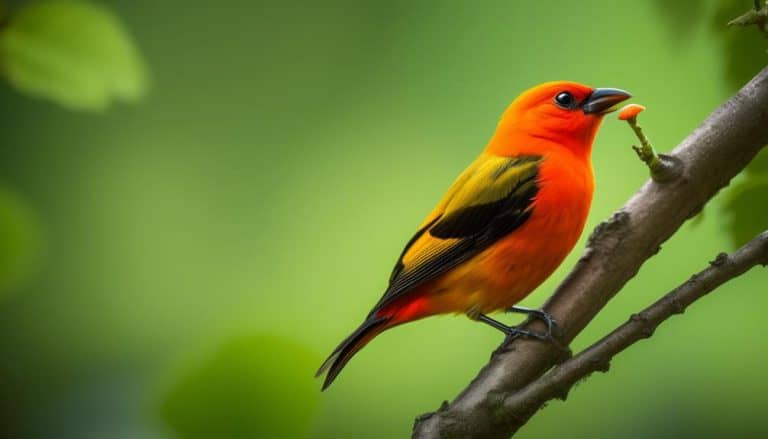As I stroll along the sandy shores of Delaware's picturesque beaches, I am struck by the remarkable diversity of avian life that graces this small coastal state.
From the peaceful serenade of seagulls to the vibrant flash of colorful warblers, Delaware's bird population is a captivating juxtaposition of beauty and grace.
But there is more to discover beyond the familiar feathered friends that dot the landscape.
Join me as I uncover the hidden treasures of Delaware's avian world, where rare species, migratory wonders, and conservation efforts await.
Birdwatching Hotspots in Delaware
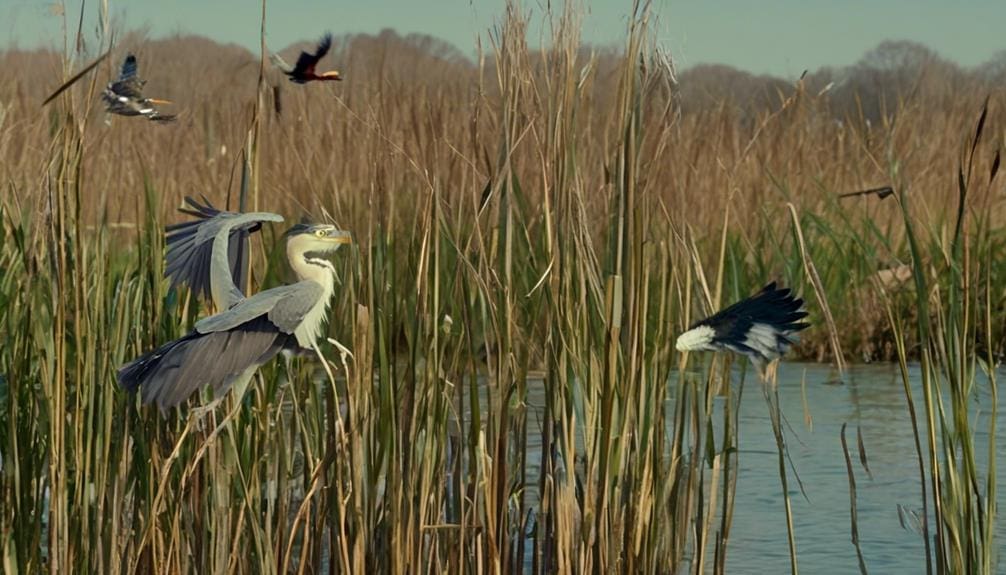
One of the most popular birdwatching hotspots in Delaware is the Bombay Hook National Wildlife Refuge. Situated along the Delaware Bay and covering over 16,000 acres, this refuge offers abundant opportunities to observe a diverse array of bird species in their natural habitat. Throughout the year, Bombay Hook hosts several popular birdwatching events that attract enthusiasts from all over. These events not only provide a chance to witness the incredible migrations of shorebirds, but also offer educational programs and guided tours led by experienced birdwatchers.
To fully enjoy the birdwatching experience in Delaware's hotspots, it's essential to have the right equipment. A good pair of binoculars is vital for spotting and identifying the various bird species. Opt for binoculars with a high magnification power and a wide field of view to capture the intricate details of distant birds. Additionally, a field guide specific to the birds of Delaware can assist in identifying the species encountered during birdwatching outings.
Birdwatching in Delaware's hotspots is an enriching experience that allows for a deeper understanding of the diverse avian life in the region. By attending popular birdwatching events and equipping oneself with the right tools, one can fully appreciate the beauty and wonder of Delaware's birdlife.
Native Bird Species of Delaware
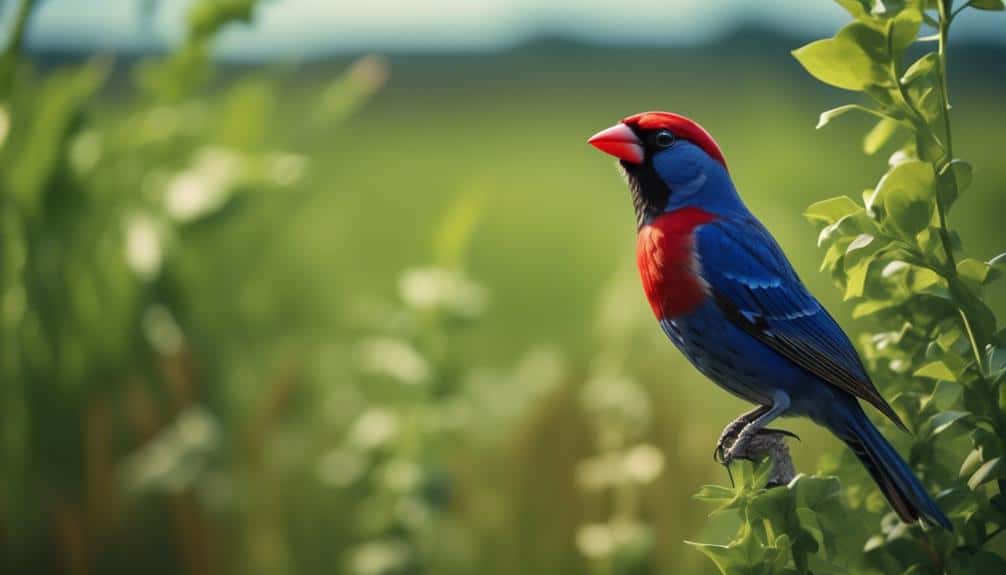
Delaware is home to a wide variety of native bird species, each with its own unique characteristics and habitat preferences. As Delaware's bird population continues to grow, it's fascinating to observe the seasonal patterns of these magnificent creatures.
Here are four native bird species that can be found in Delaware:
- American Robin (Turdus migratorius): This familiar bird is known for its red breast and melodious song. It's a common sight in Delaware during spring and summer, often seen hopping across lawns in search of worms.
- Northern Cardinal (Cardinalis cardinalis): With its vibrant red plumage and distinctive crest, the Northern Cardinal is a year-round resident in Delaware. Its beautiful song can be heard throughout the state, especially during the breeding season.
- Red-tailed Hawk (Buteo jamaicensis): This large raptor is a symbol of Delaware's wild spaces. With its broad wings and characteristic reddish tail, the Red-tailed Hawk can often be spotted soaring high above open fields, searching for prey.
- Baltimore Oriole (Icterus galbula): This striking bird with its bright orange and black plumage is a summer visitor to Delaware. It builds intricate hanging nests and is known for its beautiful, flute-like song.
Migratory Birds in Delaware
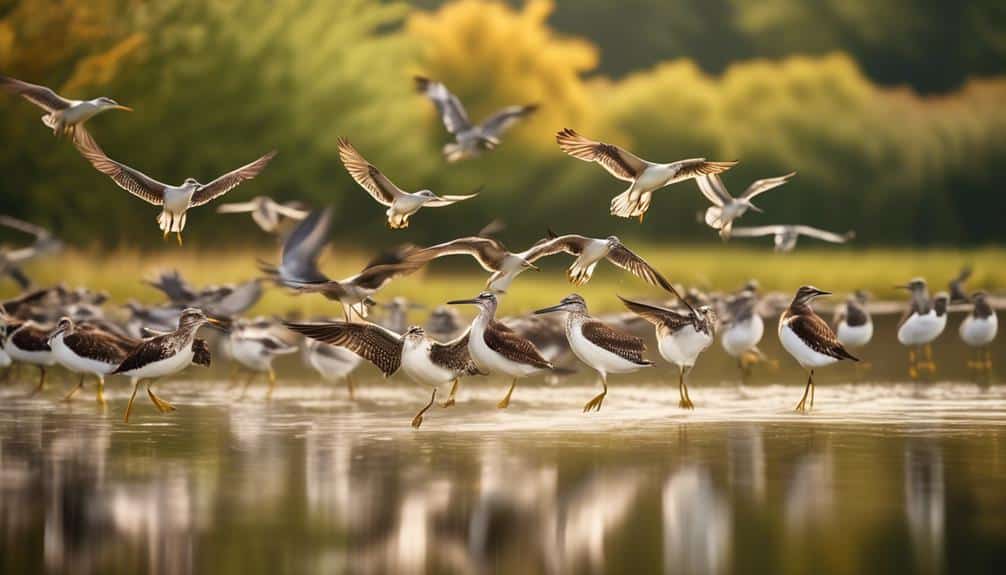
As the seasons change in Delaware, a fascinating phenomenon occurs as the native bird species make way for the arrival of migratory birds. The conservation of migratory birds plays a crucial role in maintaining the ecological balance of Delaware's avian population. To better understand their behavior and migration patterns, bird banding research has proven to be an invaluable tool.
Bird banding involves placing lightweight, uniquely numbered bands on the legs of migratory birds. These bands allow scientists to track individual birds and collect valuable data on their movements, survival rates, and breeding success. By studying the banding records, researchers can gain insights into migration routes, stopover sites, and wintering grounds.
Delaware provides a vital stopover habitat for many migratory bird species. The coastal areas, wetlands, and forests offer abundant food resources and shelter for these birds during their long journeys. Migratory bird conservation efforts focus on protecting and restoring these critical habitats, ensuring the survival of these species for future generations.
Thanks to bird banding research, Delaware has been able to contribute to international efforts in understanding migratory bird populations. By collaborating with other organizations and sharing data, scientists can work towards effective conservation strategies, ensuring the continued survival and well-being of these remarkable birds.
Rare and Endangered Birds in Delaware
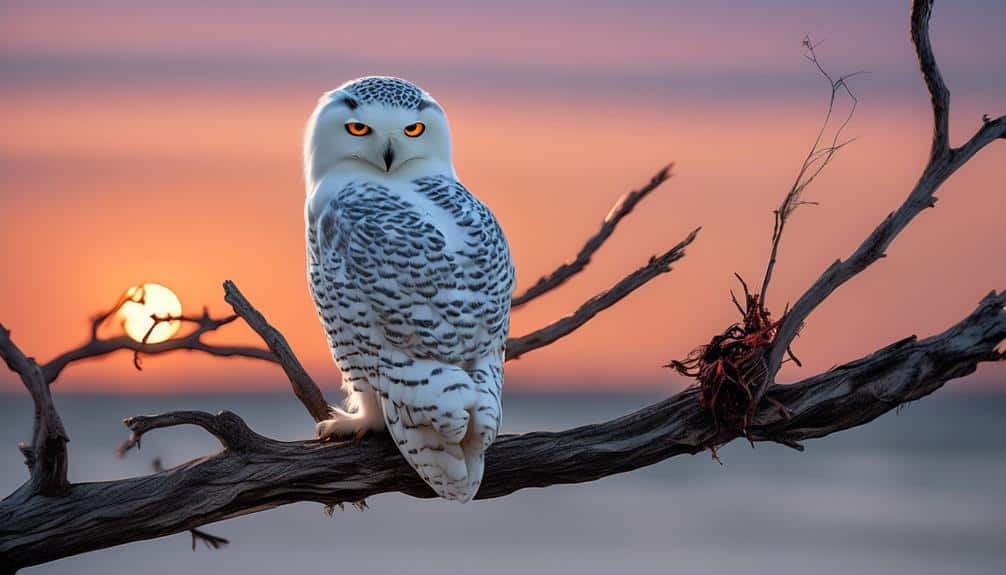
Rare and endangered bird species can be found in various habitats throughout Delaware. These species are a crucial part of the state's biodiversity and play a significant role in maintaining ecological balance. Delaware has implemented several conservation measures to protect these vulnerable bird species and ensure their survival for future generations.
Here are four rare and endangered bird species in Delaware:
- Red Knot (Calidris canutus): This migratory bird travels thousands of miles from its breeding grounds in the Arctic to winter along the Delaware Bay. The Delaware bird species conservation efforts focus on protecting the critical stopover habitat for the Red Knot during its journey.
- Delmarva Peninsula Fox Squirrel (Sciurus niger cinereus): This unique subspecies of the Eastern Fox Squirrel is found exclusively on the Delmarva Peninsula. Loss of suitable habitat and fragmentation pose significant threats to its survival. Conservation efforts aim to protect its forested habitats and promote connectivity between populations.
- Piping Plover (Charadrius melodus): These small shorebirds are known for their distinctive piping calls. They nest on Delaware's beaches during the summer months. Conservation efforts focus on protecting nesting sites, reducing disturbance, and promoting beach management practices that benefit these birds.
- Bald Eagle (Haliaeetus leucocephalus): Once on the brink of extinction, the Bald Eagle population has made a remarkable recovery. Delaware's efforts in protecting endangered birds have contributed to this success story, ensuring the conservation of this iconic species through habitat preservation and pollution control.
Delaware's commitment to protecting endangered birds highlights the importance of conservation efforts in preserving the state's unique avian diversity. By safeguarding these species and their habitats, we can ensure a future where rare and endangered birds continue to thrive in Delaware.
Tips for Successful Birdwatching in Delaware
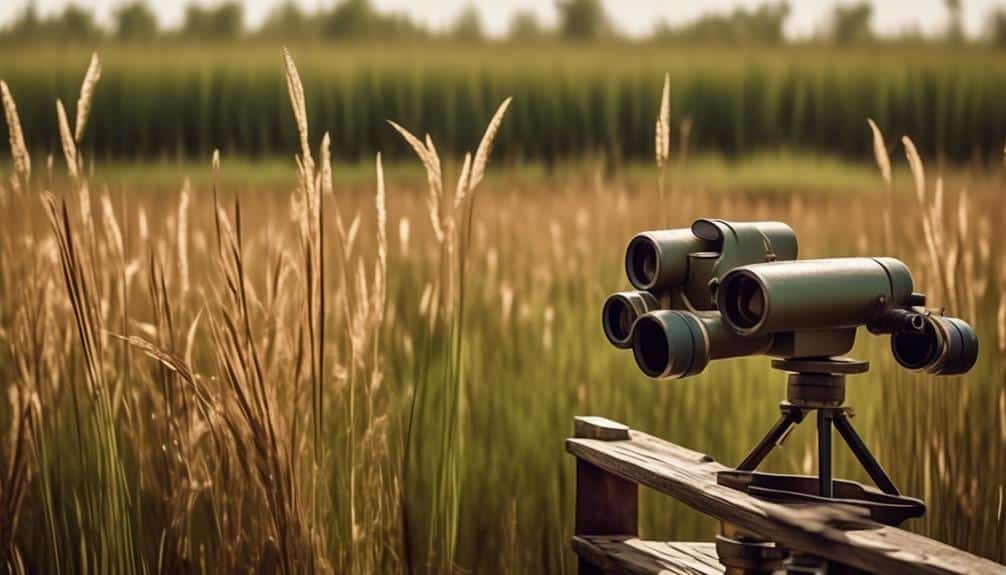
When birdwatching in Delaware, it's essential to employ proper techniques and strategies to maximize your chances of observing a diverse range of bird species. To enhance your birdwatching experience, it's crucial to have the best birdwatching gear. A pair of binoculars with high magnification and a wide field of view will allow you to observe birds from a distance without disturbing them. Additionally, a field guide specific to Delaware birds can help you identify different species accurately.
Birdwatching etiquette is also critical when observing birds in Delaware. It's essential to respect the birds and their habitat by maintaining a safe distance and avoiding sudden movements or loud noises that could startle them. It's also important to be mindful of other birdwatchers and nature enthusiasts by not obstructing their view or interfering with their activities.
Furthermore, selecting the right time and location is crucial for successful birdwatching. Mornings and evenings are the best times to spot birds, as they're most active during these periods. Delaware offers a variety of habitats, such as coastal areas, wetlands, and forests, each attracting different bird species. Researching and identifying specific locations known for bird diversity will increase your chances of encountering a wide range of species.
Conservation Efforts for Delaware's Avian Population
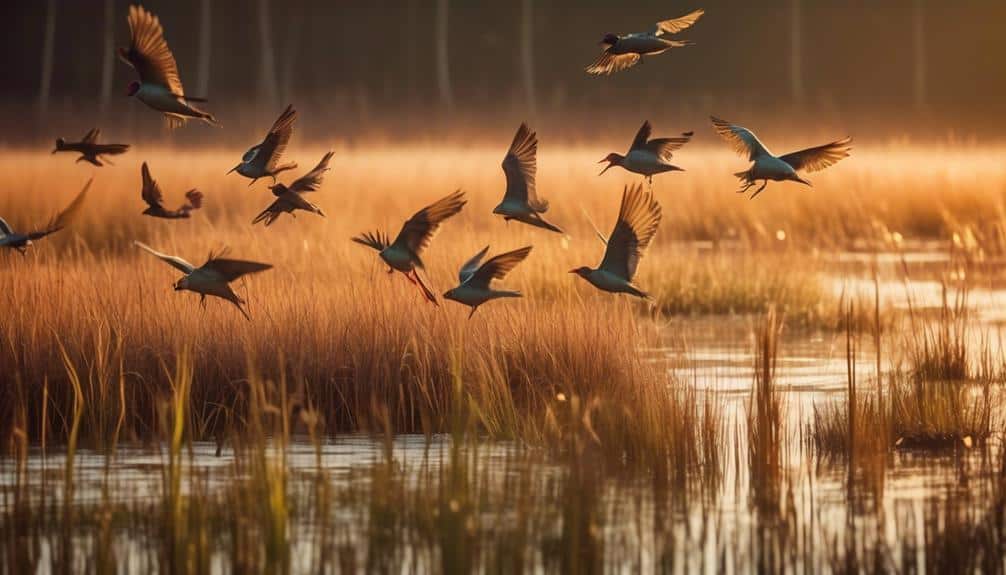
Efforts to conserve Delaware's avian population have been ongoing, with a focus on protecting and restoring crucial habitats for a diverse range of bird species. These conservation efforts aim to ensure the long-term survival and well-being of Delaware's bird populations.
Here are four important initiatives that are currently being implemented:
- Bird Banding Research: Bird banding research plays a vital role in understanding bird populations and their movements. Scientists capture birds, place a unique band on their leg, and release them. By tracking banded birds, researchers can gather valuable data on migration patterns, breeding success, and population dynamics. This information is critical for conservation planning and management.
- Bird Habitat Restoration: Delaware is actively engaged in restoring and enhancing bird habitats. This involves initiatives such as reforestation, wetland restoration, and creation of nesting sites. These efforts aim to provide suitable breeding grounds, feeding areas, and shelter for birds. Restored habitats not only benefit local bird populations but also support biodiversity and ecosystem stability.
- Protected Areas: Delaware has designated numerous protected areas, such as state parks, wildlife refuges, and conservation areas, which serve as important bird habitats. These protected areas provide undisturbed spaces for nesting, foraging, and resting. By safeguarding these areas, Delaware ensures the preservation of critical avian habitats.
- Collaborative Partnerships: Conservation efforts in Delaware involve collaboration between government agencies, non-profit organizations, and local communities. These partnerships work together to implement and support conservation initiatives. By pooling resources, expertise, and community engagement, these collaborations maximize the impact of conservation efforts and promote long-term sustainability.
Through bird banding research, habitat restoration, protected areas, and collaborative partnerships, Delaware is actively working towards the conservation of its avian population. These efforts contribute to the preservation of bird species, their habitats, and the overall ecological balance of the region.
Frequently Asked Questions
What Is the Best Time of Year to Visit Delaware for Birdwatching?
The best time of year to visit Delaware for birdwatching is during the spring and fall migration seasons. These periods offer a higher diversity of bird species and increased chances of spotting rare or uncommon birds.
Are There Any Specific Bird Species That Are Unique to Delaware?
There are unique bird species in Delaware that cannot be found in other states. When comparing birdwatching in Delaware to other states, the diversity and abundance of bird species make it an excellent destination for birdwatchers.
How Do Birds Migrate to Delaware and Where Do They Come From?
Birds migrate to Delaware from various regions, following established bird migration patterns. They come from diverse locations, contributing to the bird species diversity in the area.
Are There Any Specific Endangered Bird Species That Can Be Found in Delaware?
Yes, there are specific endangered bird species found in Delaware. Their conservation efforts are crucial to protect these birds from extinction. Additionally, the impact of climate change on bird populations further highlights the need for conservation measures.
What Are Some Common Mistakes That Birdwatchers Make and How Can They Be Avoided?
When birdwatching, common mistakes include disturbing the birds' natural habitat, excessive noise, and improper use of binoculars. To avoid these mistakes, I recommend respecting the birds' environment, maintaining a quiet presence, and practicing proper binocular techniques.
Conclusion
In conclusion, Delaware is a haven for birdwatching enthusiasts, offering a diverse range of hotspots to explore. With its abundance of native species, migratory birds, and even rare and endangered species, there's always something new and exciting to discover.
By following tips for successful birdwatching and supporting conservation efforts, we can ensure the preservation of Delaware's avian population for future generations.
As the saying goes, 'The early bird catches the worm,' and in Delaware, there's no shortage of fascinating feathery creatures to observe.

